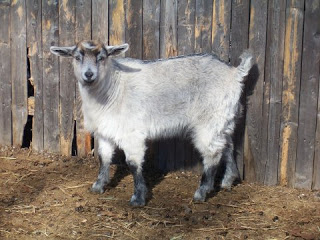3 horses, 3 training plans – Step 2 walking together & playing
 |
| Salty |
 |
| Lucky |
 |
| Sugar |
Lucky, featured previously on this blog, is an Arabian gelding in his mid-teens, very sensitive and intelligent. Lucky is easy to push away, and is quick to be turned off by aggression, strong cues or a reprimand. Lucky is easy to call in to me, if I have his trust. If I lose his trust, he has a long memory and is very slow to be willing again.
Sugar is a Quarter Horse Mare. 9 years old, Sugar is a trained cutting horse who spent several years as a broodmare. Very intelligent and sensitive, and also aloof and insecure, Sugar does her job out of obedience rather than volunteering. Sugar is easy to send away, hard to call in, and generally reluctant to participate in a relationship.
Salty is a 9 year old Quarter Horse mare bred for reining. Salty was injured during her initial breaking and was never ridden. Salty is boss mare, very intelligent, calm and sensitive. She loves people, and is always right there investigating everything. Salty is a leader, curious, bold and the first to explore new things. Salty is easy to call in, and VERY hard to send away.
In my last post I introduced what I consider to be your most important training tool – something to sit on.
I also discussed the importance of just observing your horse at the start of each session to assess mood and energy level. I look for that day’s opportunity to share something. I talked about mirroring as an important tool. Interestingly, I had been using mirroring with my horses for years, without really thinking about it or putting a name to it.
This week’s post assumes you have reached the stage where your horse comes to join you when you sit in his or her area. And that you can send your horse away while you are sitting. Now that’s a big assumption, because for most folks, this stage of the bonding takes a couple weeks if not longer. I’m speeding up the posting time frames for easier reading. Please take the time, make the time, and have a solid bond before moving on to step 2.
[You will likely recognize some of these thoughts from Carolyn Resnick’s work. I am not a certified teacher of her method, nor have I ever been a formal student and I do not claim to be teaching the Carolyn Resnick method. I am a huge fan, and her techniques resonate with me (some I have been doing instinctively for years). Her method is the best foundation under the TTEAM and Ttouch and other work I do. To learn more about Carolyn Resnick, please visit her blog.]
So for the last several days, as all the horses are comfortable joining me to just hang out, and I can now send all of them away easily, I added a new step, which you may choose to add also.
Walking together
Walking together means several things in my herd. At liberty, I invite my horse to walk along with me. Sometimes we meander, sometimes we pick a destination. Sometimes I hide a treat at the destination and help them find it. Sometimes I’ll offer a halter and leadrope and we take our walk on the road. To a large extent the day’s session is chosen by my horse. At the start of each session, I will have all my brushes, treats, halter and lead, maybe a saddle and saddle pad – all stacked neatly in the corner so we can pick and choose what suits the energy that day.
For Lucky, as he and I have been riding together already many of our sessions include him walking at liberty with me over to the equipment and seeing if he will offer to stand while I tack him up. Lucky still clings to some fears about saddles and saddle pads. There is no anger or frustration, just anxiety. He expresses his anxiety by moving, and sometimes moving rather fast. He makes no attempt to actually buck the pad or saddle off, he just trots at speed and blows off stress. We chunked his saddling process down further and I’ve been teaching him “sniff” then asking him to bend his neck around and sniff the saddle held to either side of him, held high, held low, set on the ground, carried in my arms. The goal with the “sniff” is for him to feel safe allowing the saddle into his safety zone. You can tell if your horse is guarding their personal space fairly easily. Does your horse attempt to block you with their head, or pivot to face you when you walk to the side to put on the saddle? That is guarding behavior. Respect it. Look for creative ways to allow your horse to face the fear and get comfortable with the object outside of the guarded areas. Most horses will face a scary object head on, especially if it is on the ground or even moving away from them. Then start taking it to the side far enough away to be outside of the guarded area. Finally, offer to enter the guarded space and see if you have permission. If your horse says no with more guarding behavior, back off and look for a different angle of approach, a way to chunk it down further, perhaps a way to make the forbidden object more appealing – perhaps as a serving tray for treats?
Another really important lesson Lucky taught me this week is to let go of my ideas of how I should signal my requests. I had it in my head that my cue for him to come to me must be a well-known cue taught by many natural horsemanship folks. Somehow, I was hung up on the idea that unless he would come to me using that cue, he wasn’t trained to come. And every time I offer the cue, he focuses intently on me and refuses to move a hoof. Yet, if I bend down a bit and turn a bit sideways, he comes right in. If I get really low, he comes in even faster. Duh. As soon as I let go of the standard cue and just offered what he had previously shown me would work, he was coming to me every single time. And I found that even at a fast trot, I could move into that cue and he would swoop right in and stop in front of me. BIG breakthrough in my own mind, to realize I can go with what he offers rather than be rigid. I encourage you to look for this in your own horses. What movements have you made that your horse offered a response to? Can you use those movements as cues? Perhaps your horse even prefers those cues and is offering them in the hopes of training YOU? Food for thought…
And a fun side note about Lucky. He has learned that humans carry this small flat box around, and often tap it with their fingers, to the point of ignoring him. He is fascinated. Lucky has become quite demanding of selfies, and insists on a picture and sniffing the phone every time.
Sugar
My time with Sugar this past week has been spent continuing to just share space. She has made significant progress, and will now eventually wander over and hang out with me. I also put a halter and lead on her to walk down the road and assess how she is away from her herd.
Sugar is definitely insecure, and seeks comfort and leadership from the other horses rather than from me. Very good information to file away as we move forward on this journey. Along with bonding with her, I am also working on becoming her leader. I focus on, stare at and check out anything that catches her attention. I do my best to notice it before she does. I am the first to step toward something that needs to be investigated. I move her gently and in small steps away from me or around me. I am watching closely how Salty treats her, and doing my best to mimic that relationship. Once Sugar and I have a solid bond, doing liberty work with slightly scary obstacles should be very helpful.
Salty
Salty is the opposite of Sugar. Salty is bold and curious and a leader. My project with Salty this past week has been sending her away. She is great at coming over to hang out, and will fall asleep on my shoulder. Being the lead mare, she was reluctant to be sent away. There is a dance in sending away, balancing between being firm enough to be taken seriously and not so firm that I scare her. I start with just a hard stare, move to flicking my fingers at her, then my hands, then really exaggerated movements like I was signaling someone across the field. It took 2 times of turning up the volume to full arm waves and now she moves away with a flick of my fingers. Interestingly, when she figured that out, she also offered yielding her hindquarters with just a hard stare and a finger point. On a walk around the neighborhood, Salty moves out with confidence, and is curious about everything she encounters. With particularly interesting new sights, she will pause and touch me with her nose. When she stops to graze along our walks, I am draping my arms across her back or leaning on her back, getting her comfortably with the idea of me riding her. On our walks down the road, I remind myself to make any requests about our direction or speed or boundaries as if I was going for a stroll with a good friend. I suggest and request and allow a “no”, as long as she isn’t taking the lead or invading my personal space. If she wants to stop and stare at something for several minutes, I am fine with that. I will stop with her.
Something to consider with all your horses. In my opinion, horses are very good at communicating with mental images and body language. When your horse stops and stares or is frightened, have you tried explaining what they are seeing? Picture in your mind what it is and anything you know about it. Pay attention to your breathing. Blow out a hard breath while staring hard at it, then sigh and breathe calmly while licking and chewing and yawning and soften your vision. You may be surprised at the reactions you get from your horse.
Have fun playing and stay tuned for the next post, when one or more of the horses offers to move our relationship to the next level.
I will leave you with some fun pictures of pedicure and grooming day.
 |
| Add caption |
Copyright ©2016 Carrie Eastman.
These statements have not been evaluated by the Food and Drug Administration or American Veterinary Medical Association, and are not intended to diagnose, treat, cure or prevent any disease. Always consult your veterinarian about any changes to your animal’s health program.
You May Also Like

Suggestions you can use to wade through the information on vaccines
May 20, 2014
CAE, CL and Johnes in goats
October 26, 2015






